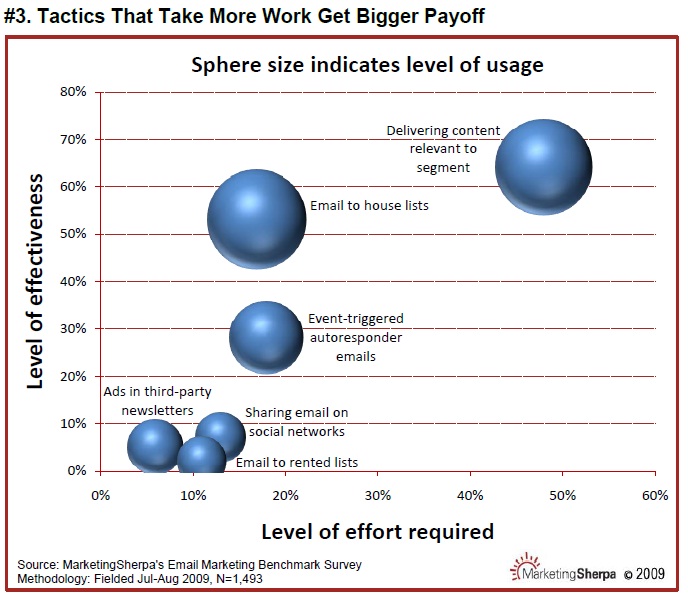The previous post was the final piece that looked at strategicc readiness for email marketing. This week we move on to an area of huge importance to the success of an email marketing programme - segmentation. Segmentation is the method by which we craft information that is tailored and delivered to a specific target audience or group. So why is it important now?
In the past many direct marketers were satisfied with traditional 'spray & pray' tactics; however these practices have led to a "customer engagement crisis" which has devalued email marketing as a means of communicating product or service value. In addition, marketers are also faced with the challenge posed by changing customer behaviour: information is now absorbed & consumed dynamically through multiple, fragmented channels instantaneously. The "Relevancy Group" referred to this as a "short-burst society"*. Below are some features of this group:
- Of the many million Facebook users, a large proportion apply short status updates every day
- The time we spend reading emails on our personal computer is declining, whereas the time we spend on mobile devices is increasing
- Many millions pay for short messaging / texting plans each month, furthering the notion of the burst
- Many millions of people burst in short messages via Twitter & similar platforms, with hundreds of thousands more signing up every day
This combination of poor practice & changing customer behaviour means companies have to 'up their game' & become more sophisticated through personalisation & segmentation. Much more than just capturing an email address, this demands more attention to detail so you can better segment & personalise emails with content relevant to each subscriber group.
It is not, however, easy to do: More than three quarters of email marketers claim to use segmentation, however these tend to be basic techniques (87% of marketers capture basic contact information on subscription, but only 28% go on to capture demographic data (age, gender, location etc))**. It would appear that a majority of marketers are still failing to capture the sort of information that enables more sophisticated segmentation.
While the process admittedly does require a significant amount of effort, it is clear from all best-practice that there is a corresponding increase in the level of effectiveness (see graphic below). The major reason for a reluctance to invest the effort is that marketers get overwhelmed by the multiple information sources - they simply don't know where to start or where to focus.
The next post will focus on processes that should allow marketers to approach segmentation logically and easily, thereby getting the very most from your email marketing campaigns.
-= David

*The Relevancy Group describes "The Short Burst Society" as a life stage and lifestyle segment of our worldwide population that knows no boundaries. It cannot simply be defined by demographic, social-economic differences, although there are some concentrations within these pods. "SBS" is an attitudinal and behavioural distinction that applies when one consumes and responds to information across a variety of digital devices, in the spoken word, or in a writing, that is extremely succinct. Visit http://ShortBurstSociety.com for additional information.
**MarketingSherpa 2010 Email Marketing Benchmark Report

